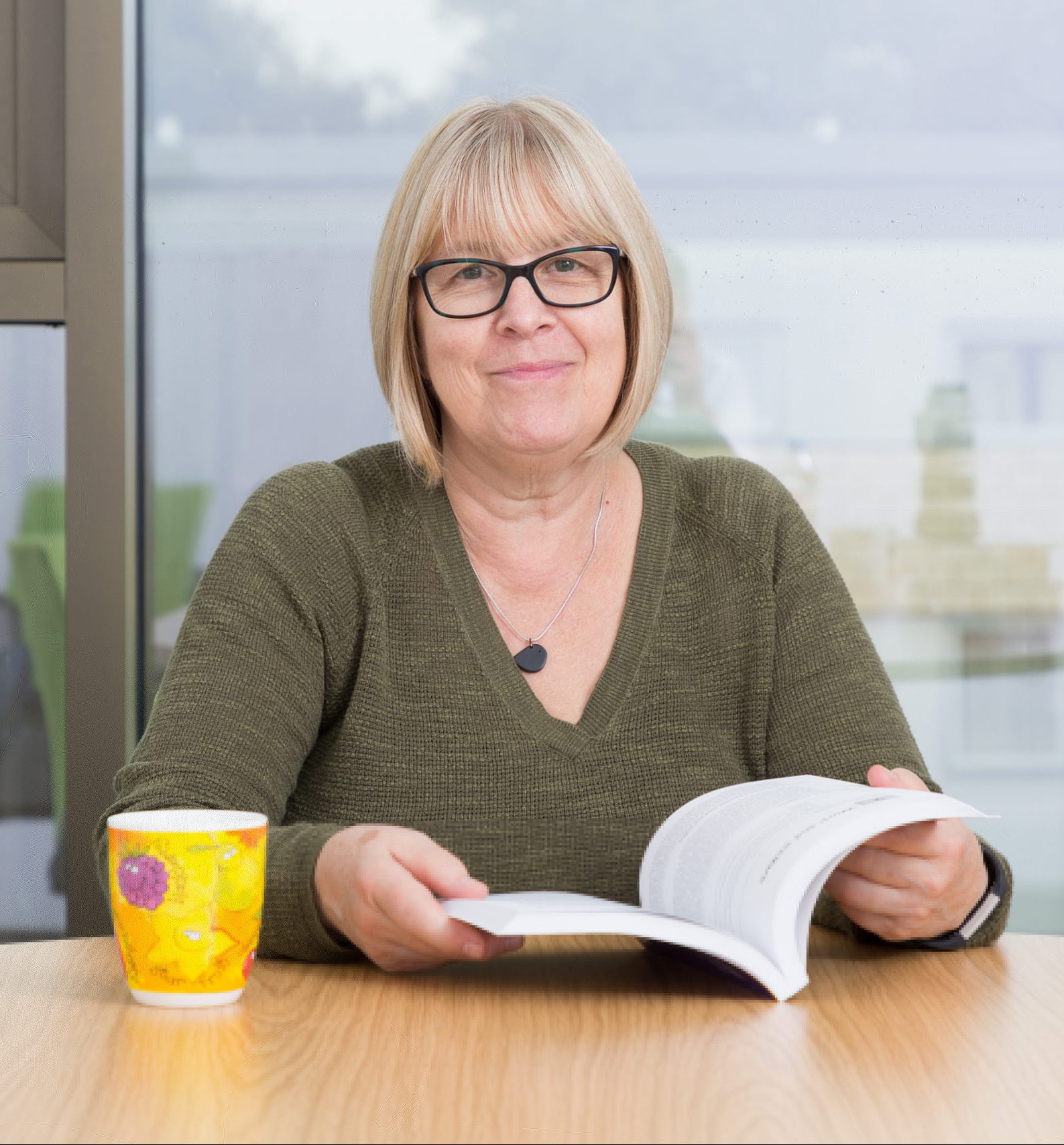Sarah’s Story
 Living with arthritis
Living with arthritis
“You won’t have arthritis! You’re far too young!”
That’s what everyone told me when I first started noticing pain and problems in my hands. I was in my 30s at the time. It wasn’t a very helpful response at all, and was quite an alienating thing to hear! It almost implied I was faking it or making a fuss. It wasn’t until I finally had x-rays on my hands which proved it was osteoarthritis before people finally listened to what I was saying and took my pain seriously.
Some of my osteoarthritis may be genetic. Several people in my family have very visible arthritis in their hands, so when pain began in mine it was very easy to notice and associate with my family members. In the early days, I did sometimes have low days where I thought to myself ‘Why me?’ It’s easy to go down this route of thinking, yet we all have things going on with our lives that we haven’t necessarily chosen. I now know it’s much better to spend my brain power on what I can do. ‘I’ve got arthritis, it’s not going anywhere, so how can I find solutions and live my best life?’
If my arthritis was genetic then there wasn’t much I could do to stop getting the condition. However, there’s still a lot that I can do to manage it and reduce the pain I feel. I try to get my 10,000 steps a day. Every morning, I get on my exercise bike and spend 20 minutes of cycling to wake my knees up. It’s certainly work, but it really makes me feel better. It reduces the pain and it helps me to feel as though I’m taking control over my arthritis and my body, rather than it controlling me.
One thing that’s really helped me is talking to other people. This is what first really drew me to Arthritis Action. They have loads of opportunities to meet others who live with arthritis and chat through their experiences and advice. There are loads of people out there going through exactly the same thing and everyone has different examples of what worked best for them to improve their lives. They showed me that I’m not alone at all. Talking to others and hearing their experiences and tips has been really beneficial.
I think it’s important to speak to people about my condition even if they themselves don’t have arthritis. If people are expecting something of me that I can’t do, like sitting in a meeting for hours on end or walking at a pace I can’t manage, then I’ll explain my situation and why I’m not able to do it. I’ve found most people aren’t being malicious or mean in any way, they just haven’t thought about it before. So many people have arthritis and similar conditions that we need to remember that not everyone is able to do the same as others. My arthritis has made me prone to dropping things sometimes, so I frequently put a finger in the top of a bottle or glass I’m holding. Some people may find that funny at first, but once I explain why, they completely understand!
Preparing for surgery
By the time I was 56, my healthcare team started discussing surgery as the next step to manage the arthritis in my back. I’d got to the point where I could only walk 200 yards with a stick before having to rest. My quality of life was really compromised. I was struggling at work, and having to make a lot of concessions in my social life. I was certainly doing everything I could to manage my condition, like strengthening my core muscles and eating healthily, but over time surgery became the best option to manage my condition. I spent a lot of time looking for advice on surgery and learning the risks involved, but it was a no-brainer. I’d done everything else I could do.
However, even with a date for my surgery locked in and confirmed, I couldn’t just put my feet up. Sadly it doesn’t work like that. I still had to do work before surgery to get my body to a good place, and I had a lot to do afterwards to rehabilitate my body. It took a lot of work, but within a few months after surgery, I was back on my feet again. It was a real transformation!
Arthritis in the workplace
After my surgery, I was off work for months. In retrospect, I can definitely see that my arthritis was really affecting my ability to work at my best for months before my surgery. I was in a line of work where I was sitting down for most of the time. I now have a stand-up/sit down desk to help me manage my condition. I try to spend as much time as possible standing up each day while I’m working on the computer, but have the option of sitting if/when I need to.
It’s certainly healthier to stand, as you’re using your leg muscles. With osteoarthritis, if you can strengthen the muscles around the joints affected by the condition, then you’re making the joint do less work. That’s a very simple thing that all offices could offer everybody, who could benefit from not sitting on their backside for hours.
I also do silly things during Zoom meetings like standing on one leg for a minute at a time. Hopefully no one notices! That helps my balance and my ankles. Or if I’m hosting a meeting, I’ll give people regular breaks wherever I can and suggest that people use the time to have a little walk around the room. It’s a small change, but it can make the world of difference over many years of working.
Living my best life
Arthritis Action has showed me that there’s so much I can be doing for myself to improve my health and reduce my painful arthritis symptoms. Even little things can make a huge difference over time, like simple exercises that I can do while working or sitting in a chair. There’s a lot of muscle strengthening things I can slot into my everyday life which aren’t energy draining or difficult. I can even do things on those days when I’m in pain, like doing some cooking, or ringing up a friend or going for a walk.
Now I’m retired, I don’t think there’s any reason I can’t live my best life. I won’t be skydiving or running a marathon any time soon, but I don’t know if I’d have done that anyway! There’s still so much I can do, so I try to focus on that instead. Yes, there are days where I really struggle and can’t do much, but I know to expect that sometimes and plan around it. When I push myself a little bit to do the things I want to, I can pace myself the next day. I’m taking control of my condition!




